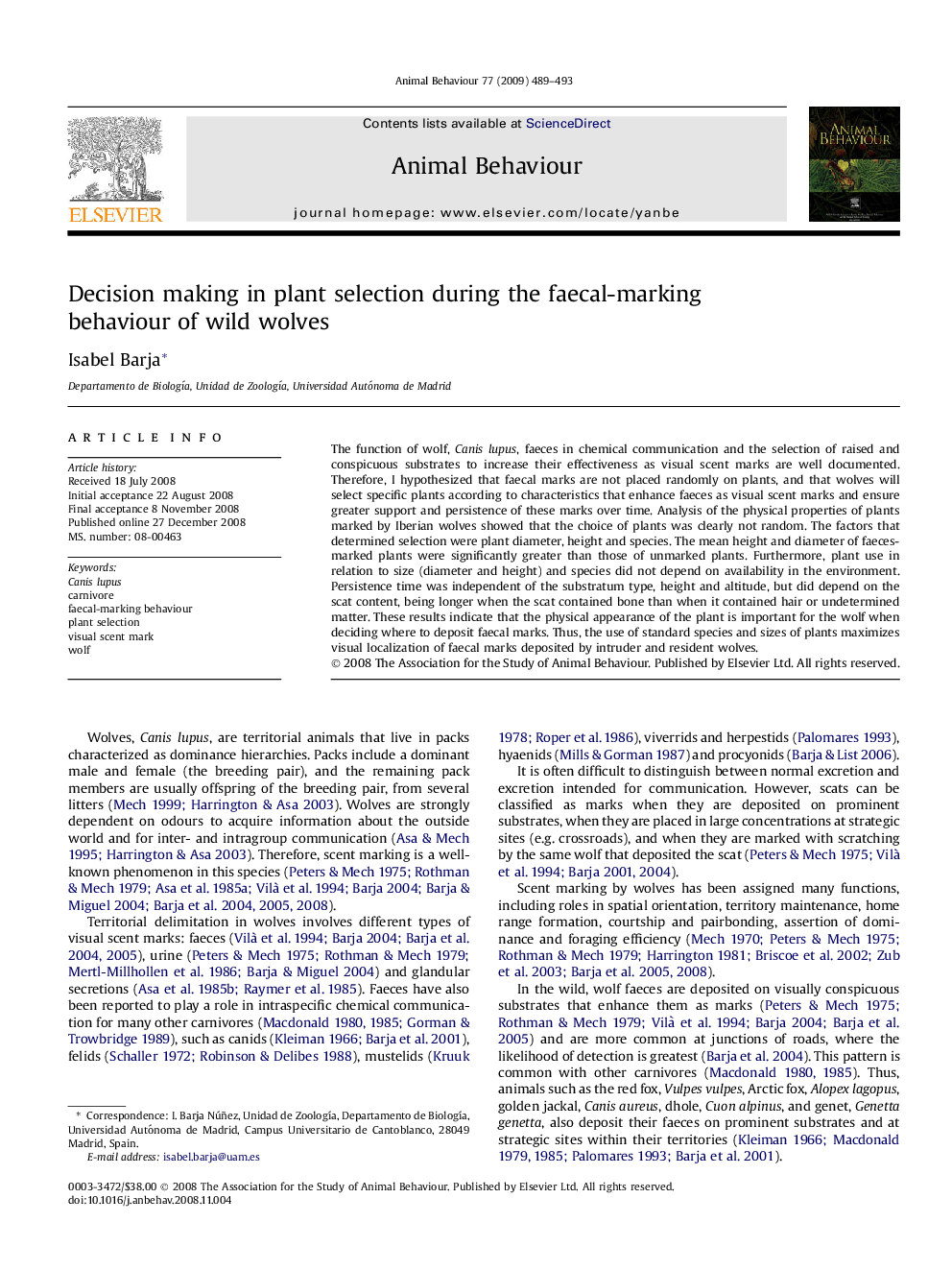| Article ID | Journal | Published Year | Pages | File Type |
|---|---|---|---|---|
| 2418174 | Animal Behaviour | 2009 | 5 Pages |
The function of wolf, Canis lupus, faeces in chemical communication and the selection of raised and conspicuous substrates to increase their effectiveness as visual scent marks are well documented. Therefore, I hypothesized that faecal marks are not placed randomly on plants, and that wolves will select specific plants according to characteristics that enhance faeces as visual scent marks and ensure greater support and persistence of these marks over time. Analysis of the physical properties of plants marked by Iberian wolves showed that the choice of plants was clearly not random. The factors that determined selection were plant diameter, height and species. The mean height and diameter of faeces-marked plants were significantly greater than those of unmarked plants. Furthermore, plant use in relation to size (diameter and height) and species did not depend on availability in the environment. Persistence time was independent of the substratum type, height and altitude, but did depend on the scat content, being longer when the scat contained bone than when it contained hair or undetermined matter. These results indicate that the physical appearance of the plant is important for the wolf when deciding where to deposit faecal marks. Thus, the use of standard species and sizes of plants maximizes visual localization of faecal marks deposited by intruder and resident wolves.
